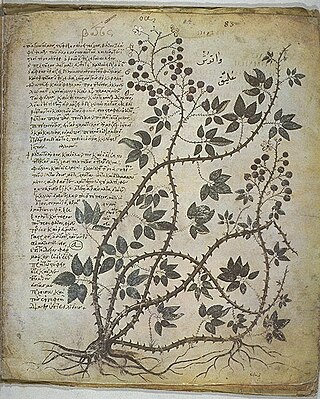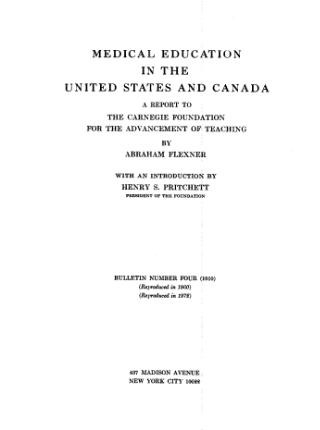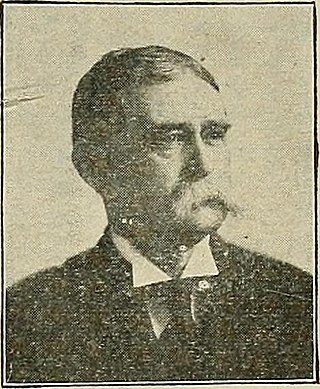Related Research Articles

James Tyler Kent (1849–1916) was an American physician best remembered as a forefather of modern homeopathy. In 1897 Kent published a massive guidebook on human physical and mental disease symptoms and their associated homeopathic preparations entitled Repertory of the Homeopathic Materia Medica, which has been translated into a number of languages. It has been the blueprint to many modern repertories used throughout the world and even remains in use by some homeopathic practitioners today.

Materia medica is a Latin term from the history of pharmacy for the body of collected knowledge about the therapeutic properties of any substance used for healing. The term derives from the title of a work by the Ancient Greek physician Pedanius Dioscorides in the 1st century AD, De materia medica, 'On medical material'.

Traditional medicine comprises medical aspects of traditional knowledge that developed over generations within the folk beliefs of various societies, including indigenous peoples, before the era of modern medicine. The World Health Organization (WHO) defines traditional medicine as "the sum total of the knowledge, skills, and practices based on the theories, beliefs, and experiences indigenous to different cultures, whether explicable or not, used in the maintenance of health as well as in the prevention, diagnosis, improvement or treatment of physical and mental illness". Traditional medicine is often contrasted with scientific medicine.

Samuel Thomson was a self-taught American herbalist and botanist, best known as the founder of the alternative system of medicine known as "Thomsonian Medicine", which enjoyed wide popularity in the United States during the 19th century.

The Merck Manual of Diagnosis and Therapy, referred to as The Merck Manual, is the world's best-selling medical textbook, and the oldest continuously published English language medical textbook. First published in 1899, the current print edition of the book, the 20th Edition, was published in 2018. In 2014, Merck decided to move The Merck Manual to digital-only, online publication, available in both professional and consumer versions; this decision was reversed in 2017, with the publication of the 20th edition the following year. The Merck Manual of Diagnosis and Therapy is one of several medical textbooks, collectively known as The Merck Manuals, which are published by Merck Publishing, a subsidiary of the pharmaceutical company Merck Co., Inc. in the United States and Canada, and MSD in other countries in the world. Merck also formerly published The Merck Index, An Encyclopedia of Chemicals, Drugs, and Biologicals.

The Flexner Report is a book-length landmark report of medical education in the United States and Canada, written by Abraham Flexner and published in 1910 under the aegis of the Carnegie Foundation. Many aspects of the present-day American medical profession stem from the Flexner Report and its aftermath. The Flexner report has been criticized for introducing policies that encouraged systemic racism.

Kampo or Kanpō medicine, often known simply as Kanpō, is the study of traditional Chinese medicine in Japan following its introduction, beginning in the 7th century. It was adapted and modified to suit Japanese culture and traditions. Traditional Japanese medicine uses most of the Chinese methods, including acupuncture, moxibustion, traditional Chinese herbology, and traditional food therapy.

Li Shizhen, courtesy name Dongbi, was a Chinese acupuncturist, herbalist, naturalist, pharmacologist, physician, and writer of the Ming dynasty. He is the author of a 27-year work, found in the Compendium of Materia Medica. He developed several methods for classifying herb components and medications for treating diseases.

Roberts Bartholow or Robert Bartholow was an American physician and a professor at several American medical colleges. He is best known for his experiments involving a 30-year-old patient named Mary Rafferty. Rafferty was admitted to Good Samaritan Hospital in Cincinnati, Ohio in 1874 with a 2-inch-diameter (51 mm) hole in her skull caused by a cancerous ulcer. Bartholow experimented with applying current to Rafferty's exposed dura using needle electrodes. His report detailed the first observations of how electrical stimulation of the brain affects motor functions of the body, but many ethical concerns were raised about the way in which he carried out his experiments. Rafferty went into a coma for three days and then died the day after coming out of the coma from a massive seizure.

John Uri Lloyd was an American pharmacist and leader of the eclectic medicine movement who was influential in the development of pharmacognosy, ethnobotany, economic botany, and herbalism.
Michael Moore was a medicinal herbalist, author of several reference works on botanical medicine, and founder of the Southwest School of Botanical Medicine (SWSBM). Before he was an herbalist Michael Moore was a musician and a composer, father and husband. He operated the SWSBM as a residency program for 28 years, first in Albuquerque, New Mexico, and later in Bisbee, Arizona. For decades, Moore influenced, impacted, taught, and reached one way or another more practicing herbalists than any other living herbalist in the United States. His books put the previously unknown materia medica of the southwest into mainstream botanical field.

Harvey Wickes Felter (1865–1927) was an eclectic medicine doctor and author of Eclectic Materia Medica. He was co-author, with John Uri Lloyd, of King's American Dispensatory.
Eclectic Materia Medica is a materia medica written by the eclectic medicine doctor Harvey Wickes Felter. This was the last, articulate, but in the end, futile attempt to stem the tide of Standard Practice Medicine, the antithesis of the model of the rural primary care "vitalist" physician that was the basis for Eclectic medicine. The herbal portions of the Materia Medica can be found at the websites below, but the book also contained alkaloids, salts, chemicals, injected compounds and other products well-outside of the herbal realm.

Finley Ellingwood was a doctor of eclectic medicine who is the author of the influential American Materia Medica, therapeutics, and pharmacognosy in 1919. Ellingwood was an active Chicago physician with many years experience, and an acknowledged expert in obstetrical/gynecological medicine. He was a vocal advocate of women physicians, and edited Ellingwood's Therapeutist for many years. His brand of Eclectic Medicine differed from the more subdued Cincinnati style as mentored by Scudder, Lloyd, Fyfe, and Felter.

John Milton Scudder was an American physician and practitioner of eclectic medicine. He was a Swedenborgian by faith.

John William Fyfe was a teaching physician in New York in the late nineteenth and early twentieth centuries.

The Tractatus de Herbis is an illustrated treatise of medicinal plants painted in 1440. It is housed under shelfmark Sloane MS 4016 in the British Library, in London.

The history of medicine in the United States encompasses a variety of approaches to health care in the United States spanning from colonial days to the present. These interpretations of medicine vary from early folk remedies that fell under various different medical systems to the increasingly standardized and professional managed care of modern biomedicine.
The history of herbalism is closely tied with the history of medicine from prehistoric times up until the development of the germ theory of disease in the 19th century. Modern medicine from the 19th century to today has been based on evidence gathered using the scientific method. Evidence-based use of pharmaceutical drugs, often derived from medicinal plants, has largely replaced herbal treatments in modern health care. However, many people continue to employ various forms of traditional or alternative medicine. These systems often have a significant herbal component. The history of herbalism also overlaps with food history, as many of the herbs and spices historically used by humans to season food yield useful medicinal compounds, and use of spices with antimicrobial activity in cooking is part of an ancient response to the threat of food-borne pathogens.
William G. Boericke was an Austrian-born American physician and ardent, influential exponent of homeopathy. He is known in the field today as the compiler and editor of the Pocket Manual of Homeopathic Materia Medica. The ninth edition has endured as his most re-published version partly because of its then final inclusion of a mini-repertory by his brother, Oscar Eugene Boericke, MD, also a homeopathic physician.
References
- ↑ Warren, Leonard (2015). Constantine Samuel Rafinesque: A Voice in the American Wilderness. Lexington, KY: University Press of Kentucky.
- ↑ Kelly, Howard A.; Burrage, Walter L. (eds.). . . Baltimore: The Norman, Remington Company.
- ↑ Council on Medical Education and Hospitals (1918). Medical Colleges of the United States and of foreign countries 1918. American Medical Association.
- ↑ Former Cincinnati Medical Schools and Colleges, Archives and Rare Books, University Libraries, University of Cincinnati
- ↑ John S. Haller, A Profile in Alternative Medicine: The Eclectic Medical College of Cincinnati, 1835–1942, Kent State University Press, 1999, ISBN 0-585-26220-9
- 1 2 3 "The Eclectic Materia Medica (Felter)". www.swsbm.com.
- ↑ Flexner Report , 1910.
- ↑ "President's Annual Address. - Henriette's Herbal Homepage". www.henriettes-herb.com.
- ↑ "Lloyd Library and Museum". www.lloydlibrary.org.
- ↑ "Felter, 1912: Biographies of King, Howe and Scudder. - Henriette's Herbal Homepage". www.henriettes-herb.com.
- ↑ List of publications by Eclectic physicians, scanned by David Winston